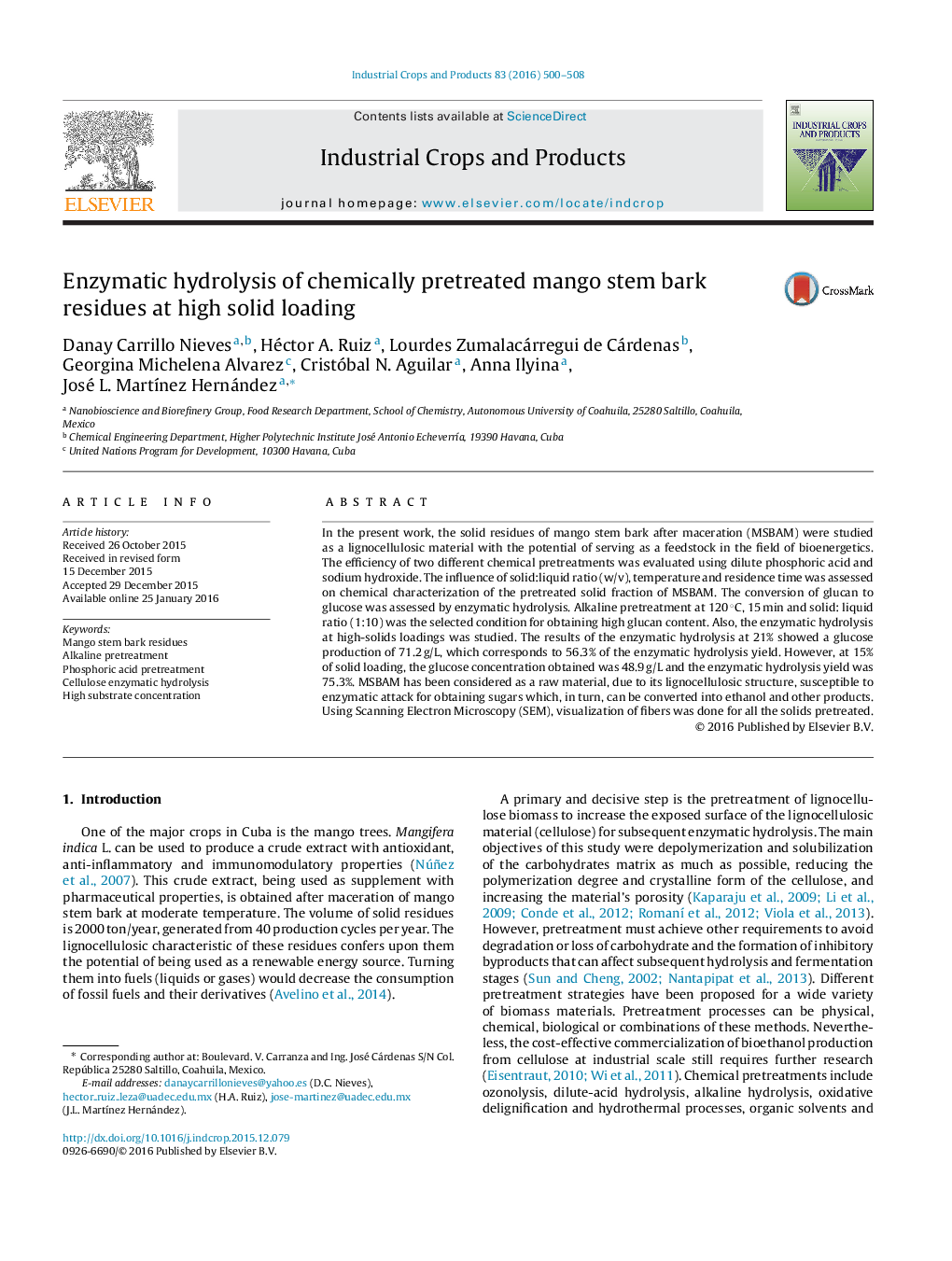| Article ID | Journal | Published Year | Pages | File Type |
|---|---|---|---|---|
| 4512345 | Industrial Crops and Products | 2016 | 9 Pages |
•Stem bark mango residues are a new source of raw material in the bioenergetics field.•Alkaline pretreatments increase glucan content in residues of mango.•Residues pretreated improve enzymatic hydrolysis at high substrate loading.
In the present work, the solid residues of mango stem bark after maceration (MSBAM) were studied as a lignocellulosic material with the potential of serving as a feedstock in the field of bioenergetics. The efficiency of two different chemical pretreatments was evaluated using dilute phosphoric acid and sodium hydroxide. The influence of solid:liquid ratio (w/v), temperature and residence time was assessed on chemical characterization of the pretreated solid fraction of MSBAM. The conversion of glucan to glucose was assessed by enzymatic hydrolysis. Alkaline pretreatment at 120 °C, 15 min and solid: liquid ratio (1:10) was the selected condition for obtaining high glucan content. Also, the enzymatic hydrolysis at high-solids loadings was studied. The results of the enzymatic hydrolysis at 21% showed a glucose production of 71.2 g/L, which corresponds to 56.3% of the enzymatic hydrolysis yield. However, at 15% of solid loading, the glucose concentration obtained was 48.9 g/L and the enzymatic hydrolysis yield was 75.3%. MSBAM has been considered as a raw material, due to its lignocellulosic structure, susceptible to enzymatic attack for obtaining sugars which, in turn, can be converted into ethanol and other products. Using Scanning Electron Microscopy (SEM), visualization of fibers was done for all the solids pretreated.
